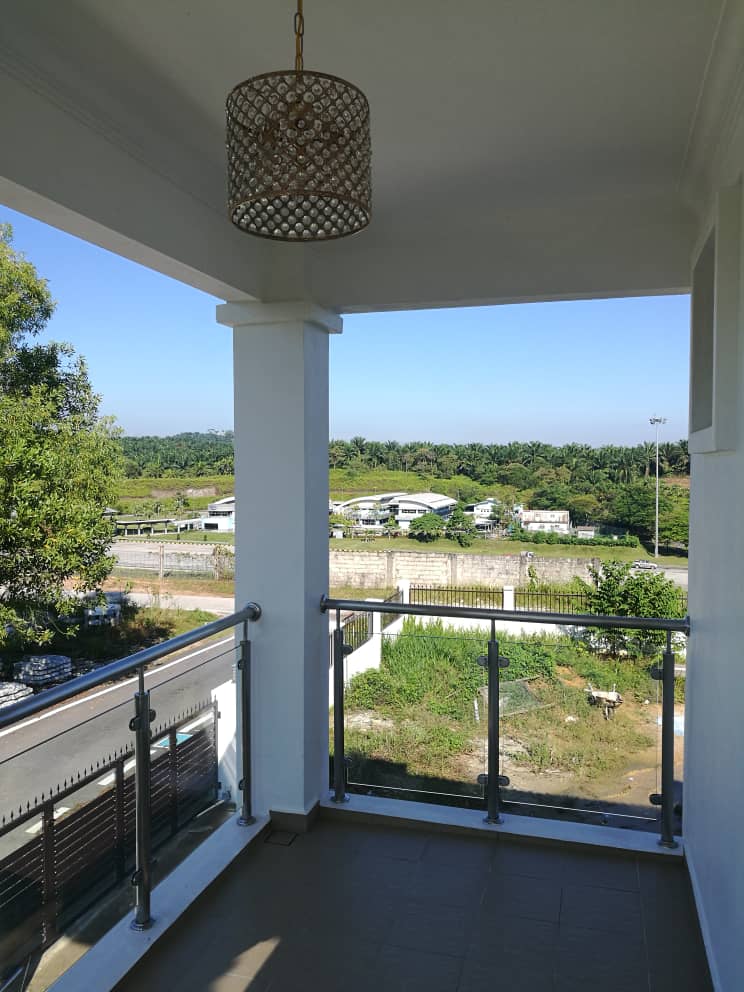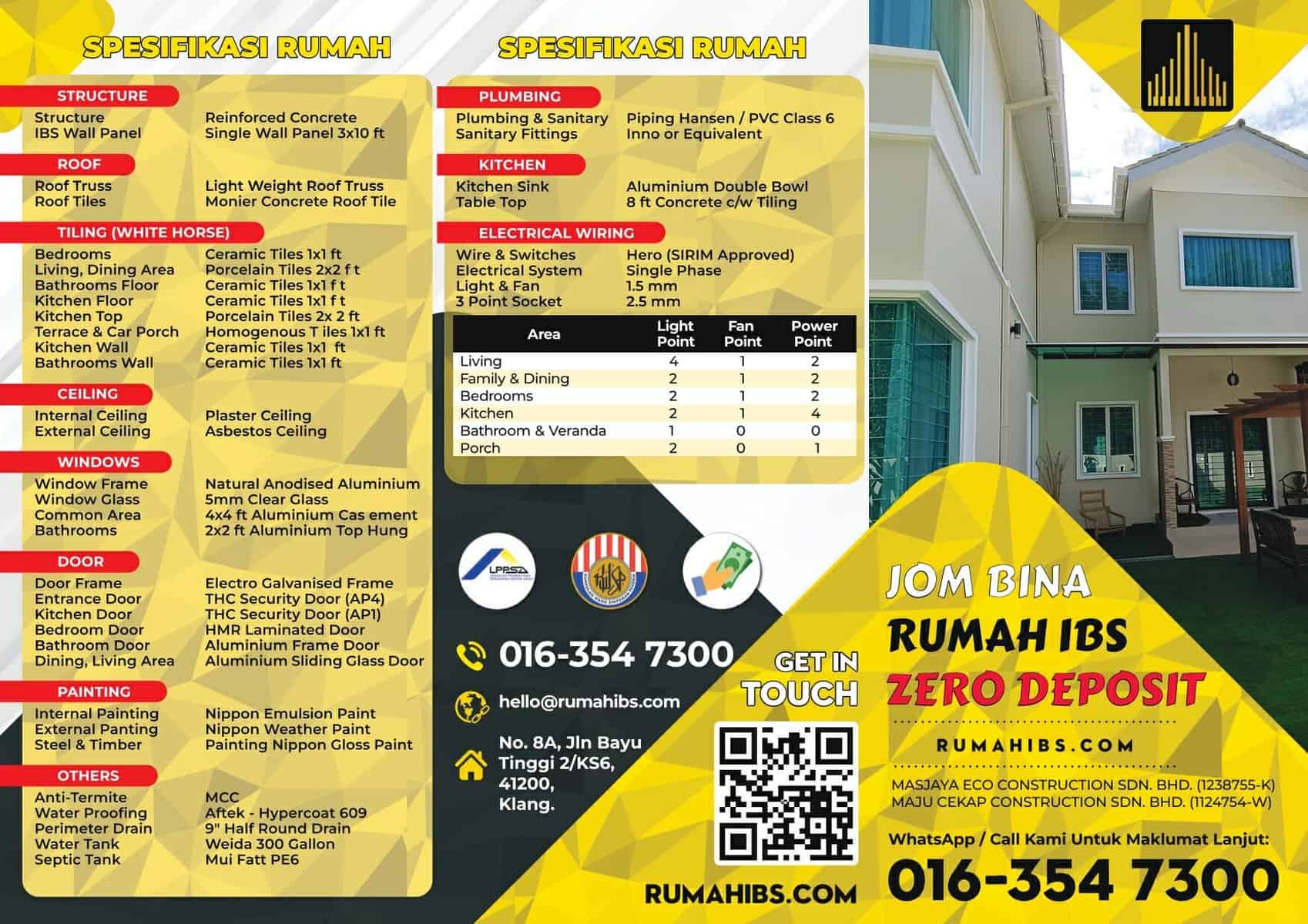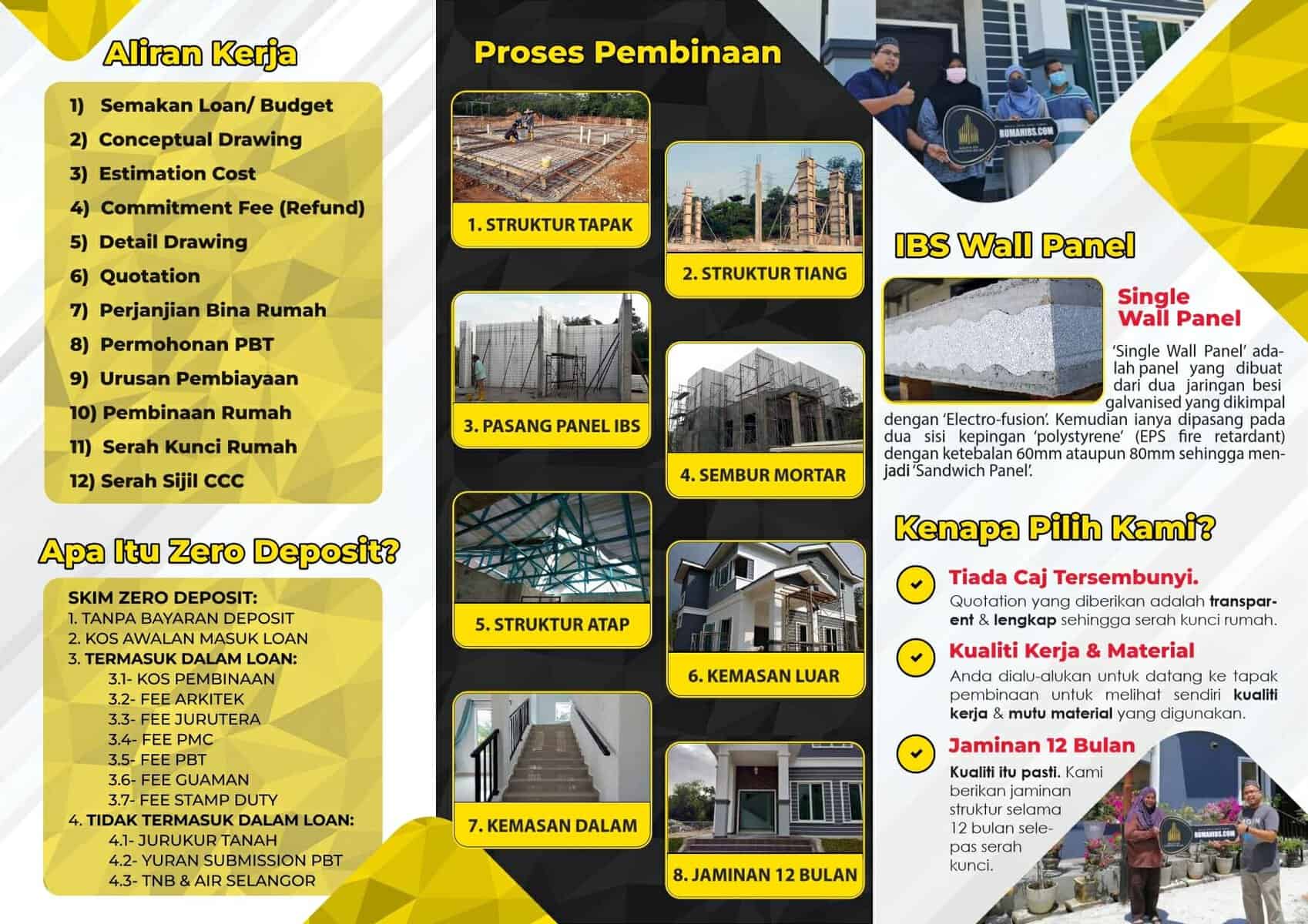
Blog
Menganalisis Kos Pembinaan IBS di Malaysia


Menganalisis Kos Pembinaan IBS di Malaysia
Senarai Kandungan
- Pengenalan
- Memahami Sistem Binaan Industrialized Building System (IBS)
- Kelebihan Melaksanakan IBS dalam Projek Pembinaan
- Faktor-faktor yang Mempengaruhi Kos Pembinaan IBS
- 4.1 Kompleksiti Reka Bentuk
- 4.2 Skala Projek
- 4.3 Keadaan Tapak
- 4.4 Pemilihan Bahan
- 4.5 Proses Pengeluaran dan Pemasangan
- Pelaburan Awal dalam Mesin dan Peralatan IBS
- Penjimatan Kos dalam Tenaga Kerja dan Masa
- Kos Bahan dalam Pembinaan IBS
- Kos Penyelenggaraan dan Pembaikan
- Kajian Kes Mengenai Kos Pembinaan IBS
- Cabaran dan Had Pembinaan IBS
- Tren dan Peluang Masa Depan dalam Pembinaan IBS
- Kesimpulan
- Soalan Lazim (FAQs)
Pengenalan
Dalam beberapa tahun terakhir, industri pembinaan di Malaysia telah mengalami perubahan penting dengan adanya peningkatan penggunaan Sistem Binaan Industrialized Building System (IBS). IBS telah muncul sebagai faktor perubahan, mengubah cara pembinaan bangunan dilakukan. Artikel ini bertujuan untuk memberikan analisis menyeluruh mengenai kos pembinaan IBS di Malaysia. Dengan memahami faktor-faktor yang mempengaruhi kos, pihak berkepentingan dapat membuat keputusan yang bijak, mengoptimalkan bajet projek, dan mencapai penyelesaian pembinaan yang berkesan dari segi kos dan kelestarian.
Memahami Sistem Binaan Industrialized Building System (IBS)
Sistem Binaan Industrialized Building System (IBS) adalah kaedah pembinaan yang melibatkan pengilangan komponen pembinaan di luar tapak, diikuti dengan pemasangan komponen tersebut di tapak. Penggunaan komponen pra-pasang dan sistem modular dalam IBS meningkatkan produktiviti, kualiti, dan kelestarian dalam projek pembinaan. Kaedah IBS dapat meliputi pelbagai sistem, seperti sistem panel hingga modul volumetrik, setiap satu memberikan kebaikan unik dan implikasi kos.
Kelebihan Melaksanakan IBS dalam Projek Pembinaan
Melaksanakan IBS dalam projek pembinaan menawarkan pelbagai kelebihan berbanding dengan kaedah pembinaan tradisional. Mari kita lihat beberapa kelebihan utama ini:
- Produktiviti yang Tinggi: Pembinaan IBS mengurangkan kerja yang bergantung pada tenaga kerja, menyelaraskan proses pembinaan, dan mempercepatkan jadual projek, sehingga projek dapat diselesaikan dengan lebih cepat.
- Pengurangan Sisa Pembinaan: Dengan mengoptimalkan penggunaan bahan dan mengurangkan aktiviti pembinaan di tapak, IBS secara signifikan mengurangkan sisa pembinaan, menjadikannya pilihan yang mesra alam.
- Kualiti dan Ketahanan Struktur yang Baik: Komponen IBS dihasilkan dengan ketepatan dan dapat direka bentuk untuk memenuhi keperluan khusus, memastikan kualiti, ketahanan, dan integriti struktur bangunan yang lebih tinggi.
- Penjimatan Kos: Walaupun pelaburan awal dalam mesin dan peralatan IBS mungkin besar, projek pembinaan IBS sering menghasilkan penjimatan kos jangka panjang melalui pengurangan keperluan tenaga kerja dan penyingkatan tempoh projek.
Faktor-faktor yang Mempengaruhi Kos Pembinaan IBS
Beberapa faktor mempengaruhi kos yang berkaitan dengan projek pembinaan IBS. Memahami faktor-faktor ini penting untuk membuat anggaran kos yang tepat dan pengurusan projek yang berkesan. Mari kita lihat faktor-faktor utama yang mempengaruhi kos pembinaan IBS:
4.1 Kompleksiti Reka Bentuk
Kompleksiti reka bentuk bangunan secara langsung mempengaruhi kos pembinaan IBS. Reka bentuk yang rumit mungkin memerlukan komponen pra-pasang yang disesuaikan, yang boleh meningkatkan kos pengilangan dan pemasangan. Pertimbangan yang teliti dan kerjasama antara arkitek, jurutera, dan pengilang adalah penting untuk mencapai keseimbangan antara kompleksiti reka bentuk dan kecekapan kos.
4.2 Skala Projek
Skala projek memainkan peranan penting dalam menentukan kos pembinaan IBS. Projek yang lebih besar boleh mendapat manfaat daripada ekonomi skala, yang membawa kepada penjimatan kos. Di sisi lain, projek dengan skala yang lebih kecil mungkin menghadapi kos unit yang lebih tinggi disebabkan oleh kos penyediaan dan operasi fasiliti pengeluaran IBS.
4.3 Keadaan Tapak
Keadaan tapak dapat memberi impak yang besar terhadap kos pembinaan IBS. Faktor seperti akses terhad, topografi yang tidak rata, atau logistik yang mencabar boleh meningkatkan kos pengangkutan dan pemasangan. Melakukan analisis tapak yang teliti dan merancang untuk mengatasi cabaran yang mungkin timbul akan membantu mengurangkan kos tambahan ini.
4.4 Pemilihan Bahan
Pemilihan bahan dalam pembinaan IBS mempunyai impak pada kualiti dan kos. Memilih bahan berkualiti tinggi dan tahan lama mungkin meningkatkan kos awal, tetapi dapat membawa penjimatan kos jangka panjang dalam penyelenggaraan dan pembaikan. Penting untuk mencapai keseimbangan yang tepat antara kos dan kualiti, dengan mempertimbangkan keperluan projek yang khusus.
4.5 Proses Pengeluaran dan Pemasangan
Kefisienan proses pengeluaran dan pemasangan memainkan peranan penting dalam pengurusan kos pembinaan IBS. Kaedah pengeluaran yang teratur, jujukan pemasangan yang efisien, dan pengurusan rantaian bekalan yang berkesan dapat mengurangkan kos tenaga kerja dan masa. Mengamalkan prinsip pengeluaran lean dan memanfaatkan teknologi otomasi dapat meningkatkan lagi kecekapan kos.
Pelaburan Awal dalam Mesin dan Peralatan IBS
Melaksanakan projek pembinaan IBS memerlukan pelaburan awal dalam mesin dan peralatan khas. Ini termasuk menubuhkan kilang untuk pengeluaran komponen, melaksanakan talian pengeluaran automatik, dan melaksanakan sistem pengangkutan. Walaupun pelaburan awal mungkin besar, adalah penting untuk mempertimbangkan manfaat jangka panjang dan penjimatan kos yang IBS boleh tawarkan.
Penjimatan Kos dalam Tenaga Kerja dan Masa
Salah satu kelebihan utama pembinaan IBS adalah potensi penjimatan kos dalam tenaga kerja dan masa. Dengan komponen pra-pasang, aktiviti pembinaan di tapak dapat diselaraskan, mengakibatkan pengurangan keperluan tenaga kerja dan penyingkatan tempoh projek. Ini dapat menghasilkan penjimatan kos secara keseluruhan dan meningkatkan keuntungan projek. Selain itu, mengurangkan kerja yang bergantung pada tenaga kerja juga menghasilkan persekitaran kerja yang lebih selamat, mengurangkan risiko kemalangan dan kecederaan.
Kos Bahan dalam Pembinaan IBS
Kos bahan merupakan sebahagian besar daripada kos pembinaan IBS. Ia melibatkan kos bahan mentah, pengangkutan, dan penyimpanan. Pemilihan bahan, seperti konkrit, keluli, atau kayu, dapat mempengaruhi secara signifikan kos keseluruhan. Penting untuk mencapai keseimbangan antara kos bahan dan pertimbangan berkualiti untuk memastikan keputusan projek yang optimum.
Kos Penyelenggaraan dan Pembaikan
Walaupun pembinaan IBS dikenali dengan ketahanan dan kualiti yang baik, kos penyelenggaraan dan pembaikan masih perlu dipertimbangkan dalam bajet projek keseluruhan. Pemeriksaan berkala dan pembaikan yang diperlukan sepanjang hayat bangunan perlu diambil kira untuk mengekalkan integriti dan kebolehgunaannya. Mempraktikkan protokol penyelenggaraan yang betul dan memanfaatkan teknologi penyelenggaraan prediktif dapat membantu mengoptimalkan kos penyelenggaraan jangka panjang.
Kajian Kes Mengenai Kos Pembinaan IBS
Menganalisis kajian kes sebenar memberikan pandangan berharga mengenai kos yang berkaitan dengan pembinaan IBS. Dengan mengkaji pelbagai projek dalam skala dan kompleksiti yang berbeza, kita dapat memperoleh pemahaman menyeluruh mengenai implikasi kos dan mengenal pasti bidang yang boleh dioptimumkan kosnya. Mengkaji projek pembinaan IBS yang berjaya dapat menginspirasikan pendekatan inovatif dan menyoroti amalan terbaik untuk pelaksanaan kos yang berkesan.
Cabaran dan Had Pembinaan IBS
Walaupun terdapat kelebihan, pembinaan IBS juga menghadapi cabaran dan had yang perlu dipertimbangkan. Ini termasuk keperluan tenaga kerja yang mahir, kekangan dalam fleksibiliti reka bentuk berbanding dengan kaedah pembinaan tradisional, pelaburan awal yang lebih besar, dan potensi masalah keserasian antara komponen IBS yang berbeza. Memahami dan menangani cabaran ini melalui perancangan yang baik, latihan, dan kerjasama adalah penting untuk pelaksanaan projek yang berjaya dan pengurusan kos yang efektif.
Tren dan Peluang Masa Depan dalam Pembinaan IBS
Masa depan pembinaan IBS di Malaysia menjanjikan banyak perkembangan positif. Kemajuan teknologi, seperti Model Maklumat Bangunan (BIM), automasi pengeluaran komponen pra-pasang, dan robotik, dijangka menjadikan kaedah IBS lebih cekap dari segi kos, berkesan, dan mampan. Seiring dengan perkembangan industri, peluang untuk inovasi dan kerjasama akan muncul, mendorong peningkatan lebih lanjut dalam kos pembinaan IBS dan mengembangkan aplikasinya dalam pelbagai sektor pembinaan.
Kesimpulan
Menganalisis kos pembinaan IBS di Malaysia mengungkapkan faktor-faktor yang rumit yang menyumbang kepada kos keseluruhan. Mulai dari kompleksiti reka bentuk hingga pemilihan bahan, proses pengeluaran, dan keadaan tapak, setiap aspek memainkan peranan penting dalam menentukan implikasi kos projek pembinaan IBS. Walaupun pelaburan awal dalam mesin dan peralatan mungkin besar, penjimatan kos jangka panjang dalam tenaga kerja, masa, dan penyelenggaraan membenarkan penggunaan kaedah IBS. Dengan mempertimbangkan faktor-faktor ini dan mengambil kelebihan pembinaan IBS, pihak berkepentingan dapat mencapai penyelesaian pembinaan yang berkesan dari segi kos, mampan, dan berkualiti tinggi.
Soalan Lazim (FAQs)
- Apakah pembinaan IBS? Pembinaan IBS merujuk kepada kaedah yang melibatkan penggunaan komponen pra-pasang dan sistem modular dalam pembinaan, dengan tujuan meningkatkan produktiviti, kualiti, dan kelestarian dalam proses pembinaan.
- Bagaimana pembinaan IBS dapat menjimatkan kos? Pembinaan IBS menjimatkan kos melalui pengurangan keperluan tenaga kerja, penyingkatan tempoh projek, dan pengoptimuman penggunaan bahan.
- Adakah terdapat had dalam pembinaan IBS? Ya, beberapa had pembinaan IBS termasuk keperluan tenaga kerja yang mahir, kekurangan fleksibiliti dalam reka bentuk, dan pelaburan awal yang lebih besar.
- Apakah kelebihan pembinaan IBS? Kelebihan pembinaan IBS termasuk peningkatan produktiviti, pengurangan sisa pembinaan, peningkatan kualiti, dan ketahanan struktur.
-
Apakah yang diharapkan untuk masa depan pembinaan IBS di Malaysia? Masa depan pembinaan IBS di Malaysia menjanjikan, dengan kemajuan teknologi dan peluang inovasi mendorong peningkatan lebih lanjut dalam kecekapan kos dan kelestarian.





